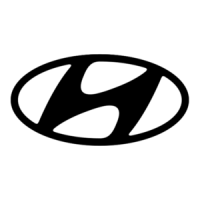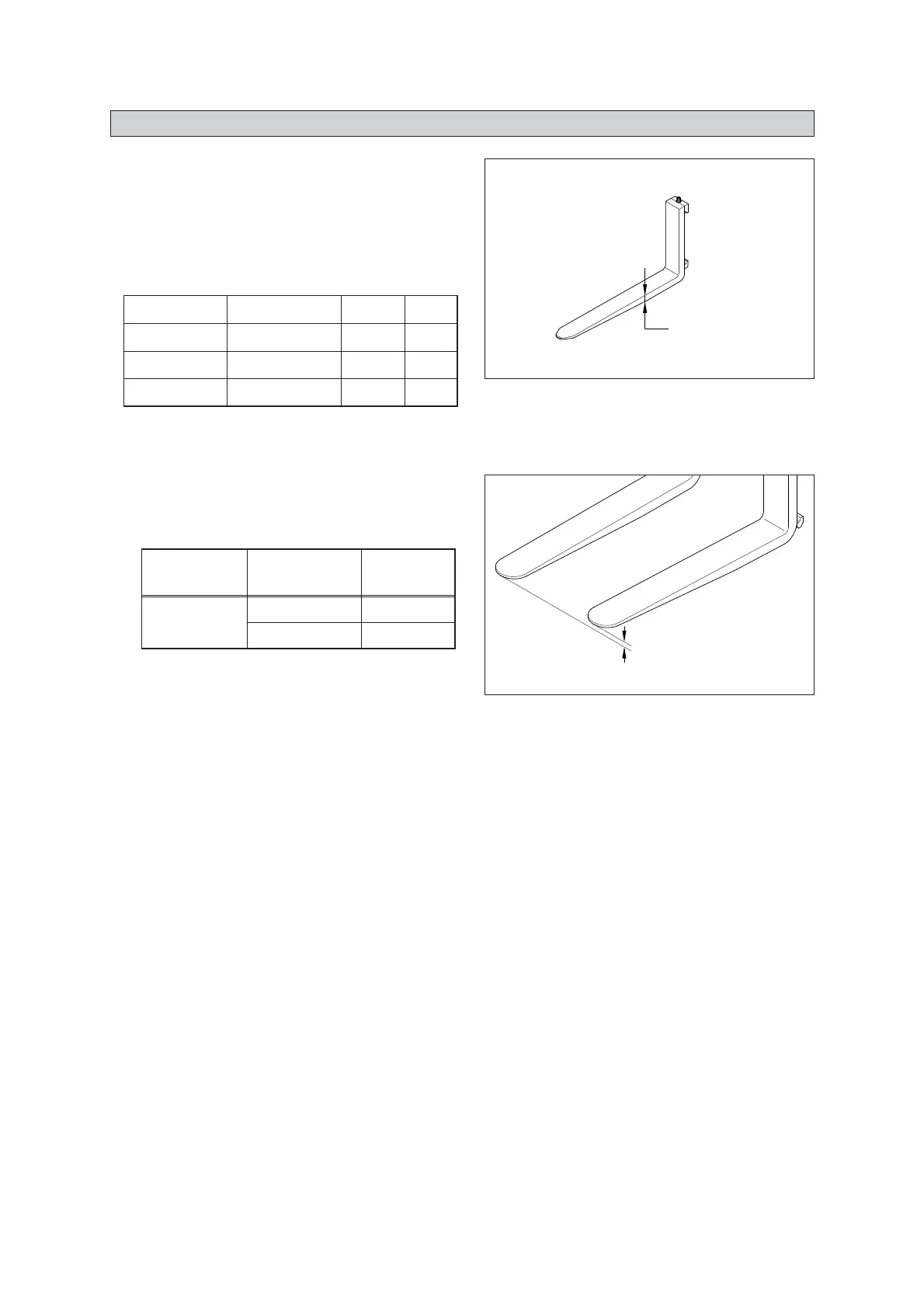8-4
GROUP 2 OPERATIONAL CHECKS AND TROUBLESHOOTING
GROUP 2 OPERATIONAL CHECKS AND TROUBLESHOOTING
1. OPERATIONAL CHECKS
FORKS
Measure thickness of root of forks and
check that it is more than specified value.
EX :
ℓ
=1800
mm
(71
in
)
1)
(1)
Thickness
Set forks in middle and measure out of
parallel and difference in height at the top of
forks.
2)
STD Fork assy Applicable model
110D-7A
130D-7A
61FT-70342
61FT-71440
Standard
75(3.0)
90(3.5)
Limit
68(2.7)
80(3.2)
mm
(
in
)
2. MAST
Check for cracks at mast stay, tilt cylinder bracket, guide bar, fork carriage and roller shaft weld.
Check visually or use crack detection method. Repair any abnormality.
Set mast vertical, raise forks about 10
cm
from ground and check front-to-rear clearance and left-to-
right clearance between inner mast and fork carriage, and between outer mast and inner mast.
Use these figures to judge if there is any play at roller or rail.
·
Front-to-rear clearance : Within 2.0
mm
(0.08
in
)
·
Left-to-right clearance : Within 2.5
mm
(0.10
in
)
Check that there is an oil groove in bushing at mast support.
Set mast vertical, raise forks about 10
cm
from ground, and push center of lift chain with finger to
check for difference in tension.
If there is any difference in tension, adjust chain stopper bolt.
Check visually for abnormalities at thread of chain anchor bolt, and at contact surface between
chain wheel and chain.
Rotate chain wheel by hand and check for any play of bearing.
1)
2)
3)
4)
5)
D507FK01
Most force is concentrated at root of fork
and at hook, so use crack detection method
to check cracks.
3)
Difference in height
at tip of forks
D255FK02
61FT-70143
160D-7A 95(3.7)
85(3.3)
Model
Fork length
(
mm
)
110D-7A
130D-7A
160D-7A
below 1500
equal or above 1500
3
6
Height difference
(
mm
)

